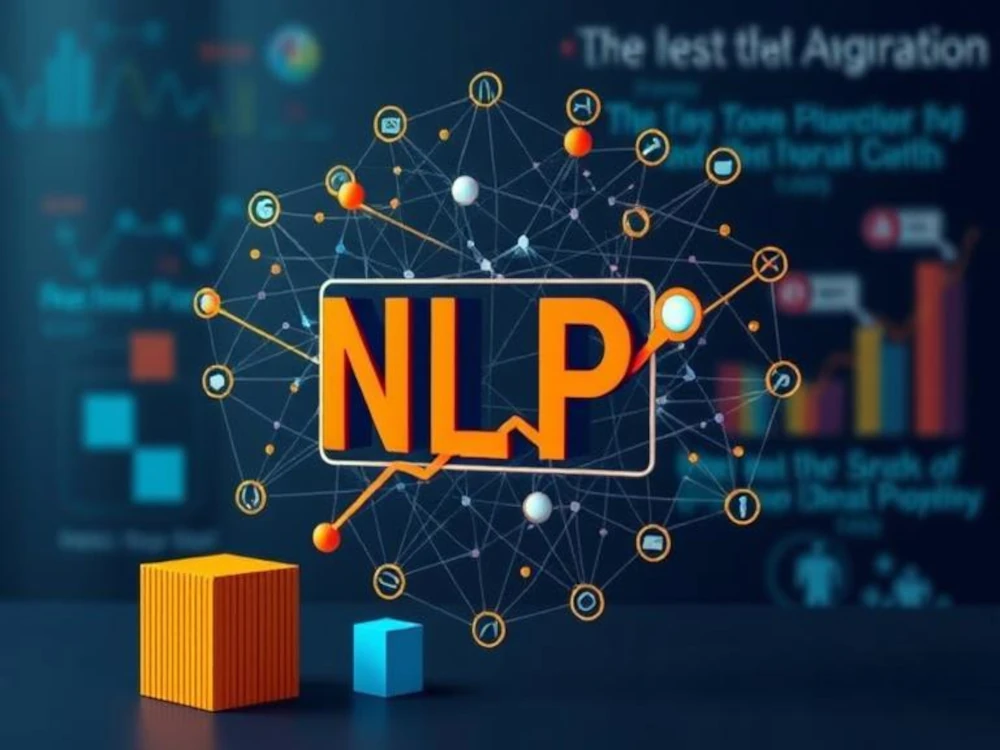Lately, Natural Language Processing (NLP) has switched into an effective tool for removing insights from unstructured data, revolutionizing the idea of data science. NLP enables situation study and interpretation of human language, opening new selections for companies to attain valuable insights from text-based data, including customer opinions, social media posts, and documents. Within the following sentences, we’ll explore the transformative abilities of NLP for data science and the way companies can harness its possibility to drive advancement and get an advantage against their competitors.
The Power of NLP in Data Science
Natural Language Processing encompasses techniques that enable computers to understand, interpret, and generate human language. By employing advanced algorithms and machine learning models, NLP allows data scientists to derive meaningful insights from vast amounts of unstructured textual data. Here are key areas where NLP for data science is revolutionizing the field of data science:

1. Sentiment Analysis: Understanding Customer Sentiments
Sentiment analysis, also referred to as opinion mining, involves analyzing text to look for the sentiment expressed through the author. NLP techniques enable data scientists to classify text as positive, negative, or neutral, supplying valuable insights into customer opinions, preferences, and sentiments. By leveraging sentiment analysis, companies can obtain a much deeper knowledge of their subscriber base making data-driven decisions to enhance products, services, and client satisfaction.
2. Named Entity Recognition: Extracting Crucial Information
Named Entity Recognition (NER) is really a subfield of NLP that concentrates on identifying and classifying named entities in text, for example names of individuals, organizations, locations, and dates. NER techniques allow data scientists to extract crucial information from unstructured data, enabling companies to automate tasks for example removing customer contact details, tracking mentions of the brand in social networking, and identifying key entities in legal or medical documents. This automated extraction of knowledge saves time, improves efficiency, and improves the overall analysis process.
3. Text Classification: Streamlining Document Management
Text classification is the procedure of categorizing text into predefined groups or classes. NLP techniques enable data scientists to instantly classify bulk text-based data, for example documents, emails, or support tickets. This enables companies to streamline document management, automate content organization, and retrieve relevant information easily. Text classification may also be useful for email filtering, junk e-mail recognition, and content recommendation systems.
4. Topic Modeling: Discovering Hidden Themes
Topic modeling is an NLP technique that uncovers hidden themes or topics within a collection of documents. By clustering and analyzing patterns of words, data scientists can automatically identify and categorize related topics. Topic modeling helps businesses gain insights into customer interests, emerging trends, and areas of opportunity. This knowledge can be leveraged to optimize content strategy, personalize marketing campaigns, and provide targeted recommendations to customers.
5. Text Generation: Automating Content Creation
NLP techniques also enable data scientists to automate the generation of human-like text. This includes tasks such as chatbot responses, personalized recommendations, and content creation. By training machine learning models on large amounts of text data, businesses can leverage NLP to create dynamic and engaging content, improve customer experiences, and automate routine customer interactions.
Leveraging NLP for Business Advancement
While NLP offers immense potential for data science, businesses need to follow key strategies to effectively harness its capabilities for advancement:

1. Define Clear Objectives and Use Cases
Begin by defining obvious objectives and employ cases for applying NLP inside your business. Identify specific problems or challenges that may be addressed using NLP techniques. Be it improving client satisfaction, automating article marketing, or streamlining document management, getting an obvious focus enables companies to derive maximum value from NLP technologies.
2. Assemble Quality Data
Information is the building blocks associated with an effective NLP project. Assemble an assorted and representative dataset that aligns together with your objectives. Make sure the information is clean, well-annotated, and balanced to yield accurate and reliable results. You are able to leverage exterior datasets, open-source corpora, or perhaps collect and annotate your personal data to coach robust NLP models.
3. Choose Suitable NLP Algorithms and Models
According to your objectives, pick the most appropriate NLP algorithms and models for the specific tasks. NLP techniques for example sentiment analysis, named entity recognition, text classification, subject modeling, and text generation each require different approaches and models. Stay updated using the latest advancements in NLP research to leverage the very best algorithms for the projects.
4. Train and Fine-tune Machine Learning Models
Training machine learning models is a critical step in NLP projects. Leverage annotated data to train models on specific tasks, fine-tune pre-trained models, and optimize hyperparameters. NLP models often benefit from transfer learning, which involves training models on large-scale datasets and then fine-tuning them on domain-specific data.
5. Evaluate and Validate Results
Continuously evaluate and validate the results of your NLP models to ensure their accuracy and reliability. Employ rigorous testing measures, including cross-validation, performance metrics, and feedback loops. Iteratively refine your models based on insights derived from the evaluation process to enhance their performance.
6. Incorporate NLP into Business Processes
Integrate NLP capabilities into your existing business processes to fully leverage its potential. Use NLP insights to drive decision-making, improve customer experiences, automate routine tasks, and gain a competitive edge. Explore opportunities to embed NLP-powered solutions into customer support systems, social media monitoring tools, marketing automation platforms, and more.
Popular Machine Learning Classification Algorithms for NLP
In the context of NLP for data science, there are several popular machine learning classification algorithms that are commonly used. These algorithms, often combined with NLP techniques, enable effective text classification and sentiment analysis. Let’s explore some of these algorithms:
1. Support Vector Machines (SVM)
Support Vector Machines are widely used for text classification tasks. SVM is a supervised learning algorithm that works by creating a hyperplane in a high-dimensional space to separate different classes. It can effectively handle high-dimensional data, making it suitable for NLP applications with large feature spaces. SVMs have been successfully applied in sentiment analysis and text categorization tasks.
2. Naive Bayes
Naive Bayes is based on Bayes’ theorem and is a popular machine learning algorithm for text classification. It assumes that the features (words) are conditionally independent, which simplifies the calculation of probabilities. Despite its naive assumption, Naive Bayes often performs well in practice and is known for its simplicity and efficiency. It has been widely used in email spam detection, sentiment analysis, and document categorization.
3. Random Forests
Random Forests is an ensemble learning method that combines multiple decision trees to make predictions. It is known for its robustness and ability to handle high-dimensional data. Random Forests can be effective for text classification tasks when combined with appropriate feature extraction techniques for NLP. It has been used in sentiment analysis, topic classification, and document clustering.
4. Gradient Boosting Machines (GBM)
Gradient Boosting Machines are a powerful ensemble learning method that builds multiple weak models sequentially, each correcting the mistakes made by the previous models. GBM algorithms, such as XGBoost and LightGBM, have gained popularity due to their high predictive performance and ability to handle large and complex data. They have been used for text classification, sentiment analysis, and named entity recognition.
These are just a few examples of popular machine learning algorithms used for NLP tasks. Depending on the specific problem and dataset, different algorithms may yield better results. It’s essential to experiment and compare the performance of multiple algorithms to identify the most suitable one for a given task.
Conclusion: Unleashing the Power of NLP for Business Advancement
NLP is transforming the thought of data science, enabling companies to unlock insights from unstructured textual data with unparalleled precision and efficiency. By leveraging the NLP way of example sentiment analysis, named entity recognition, text classification, subject modeling, and text generation, companies can buy an edge upon your competition, drive advancement, and make data-driven decisions. When together with apparent objectives, quality data, appropriate algorithms, and efficient validation, NLP turns into an effective tool for companies to extract significant insights and unlock new options for growth. Embracing NLP for data science isn’t just a design, however an effective imperative for companies that try and stay ahead in age information.
